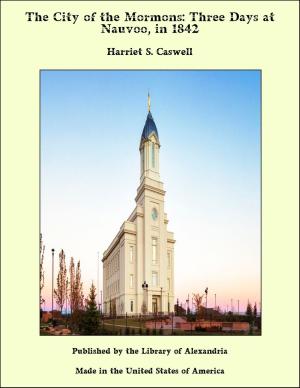Rude Stone Monuments in All Countries: Their Age and Uses
Nonfiction, Religion & Spirituality, New Age, History, Fiction & Literature| Author: | James Fergusson | ISBN: | 9781465615541 |
| Publisher: | Library of Alexandria | Publication: | March 8, 2015 |
| Imprint: | Language: | English |
| Author: | James Fergusson |
| ISBN: | 9781465615541 |
| Publisher: | Library of Alexandria |
| Publication: | March 8, 2015 |
| Imprint: | |
| Language: | English |
So great and so successful has been the industry recently applied to subjects of archæological research that few of the many problems in that science which fifty years ago seemed hopelessly mysterious now remain unsolved. Little more than forty years have elapsed since Champollion's discoveries enabled us to classify and understand the wonderful monuments of the Nile Valley. The deciphering of the cuneiform characters has in like manner enabled us to arrange and affix dates to the temples and palaces of Babylon and Nineveh. Everything that was built by the Greeks and the Romans has been surveyed and illustrated; and all the mediæval styles that arose out of them have been reduced to intelligible sequences. The rock-cut temples of India, and her still more mysterious dagobas, have been brought within the domain of history, and, like those of Burmah, Cambodia, or China, shown to be of comparatively modern date. The monuments of Mexico and Peru may be said still to defy those who are endeavouring to wrest their secrets from them; but even for these a fairly approximate date has been obtained. But amidst all these triumphs of well-directed research there still remains a great group of monuments at our own doors, regarding whose uses or dates opinions are nearly as much divided as they were in the days of rampant empiricism in the last century. It is true that men of science do not now pretend to see Druids sacrificing their bleeding victims on the altar at Stonehenge, nor to be able to trace the folds of the divine serpent through miles of upright stones at Carnac or at Avebury; but all they have yet achieved is simple unbelief in the popular fallacies, nor have they hitherto ventured to supply anything better to take their places. They still call the circles temples, but without being able to suggest to what god they were dedicated, or for what rites they were appropriate, and, when asked as to the age in which they were erected, can only reply in the words of the song, that it was "long long ago."
So great and so successful has been the industry recently applied to subjects of archæological research that few of the many problems in that science which fifty years ago seemed hopelessly mysterious now remain unsolved. Little more than forty years have elapsed since Champollion's discoveries enabled us to classify and understand the wonderful monuments of the Nile Valley. The deciphering of the cuneiform characters has in like manner enabled us to arrange and affix dates to the temples and palaces of Babylon and Nineveh. Everything that was built by the Greeks and the Romans has been surveyed and illustrated; and all the mediæval styles that arose out of them have been reduced to intelligible sequences. The rock-cut temples of India, and her still more mysterious dagobas, have been brought within the domain of history, and, like those of Burmah, Cambodia, or China, shown to be of comparatively modern date. The monuments of Mexico and Peru may be said still to defy those who are endeavouring to wrest their secrets from them; but even for these a fairly approximate date has been obtained. But amidst all these triumphs of well-directed research there still remains a great group of monuments at our own doors, regarding whose uses or dates opinions are nearly as much divided as they were in the days of rampant empiricism in the last century. It is true that men of science do not now pretend to see Druids sacrificing their bleeding victims on the altar at Stonehenge, nor to be able to trace the folds of the divine serpent through miles of upright stones at Carnac or at Avebury; but all they have yet achieved is simple unbelief in the popular fallacies, nor have they hitherto ventured to supply anything better to take their places. They still call the circles temples, but without being able to suggest to what god they were dedicated, or for what rites they were appropriate, and, when asked as to the age in which they were erected, can only reply in the words of the song, that it was "long long ago."













![Cover of the book His Excellency [Soin Exc. Eugene Rougon] by James Fergusson](https://www.kuoky.com/images/2015/march/300x300/9781465618795-VsUX_300x.jpg)

